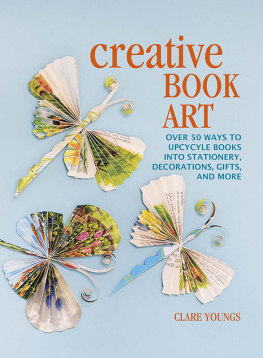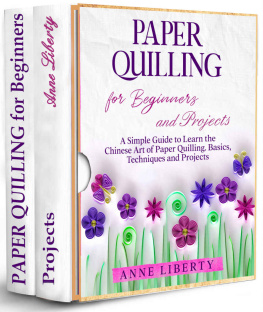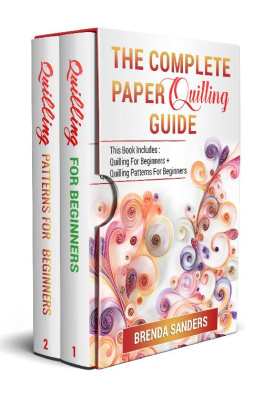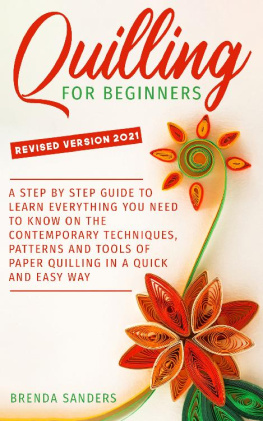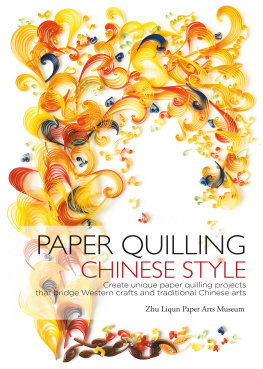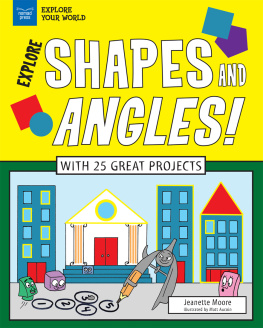Pattern Services and Revisions
If you are an Annies customer and have a question about the instructions on a pattern you have purchased, please visit:
AnniesCatalog.com/pages/customer_care/pattern_services.html
Templates
To download templates for easy printing, view the
download instructions at the end of this book or click
the Templates chapter in the Table of Contents.
Table of Contents
Getting Started
To launch your adventure in quilling, all you'll need are a few basic tools and supplies. Your first purchase should be either a slotted or needle quilling tool. For beginners, a slotted tool is helpful in holding the ends of quilling strips securely as you start to roll paper strips. As you advance your skills, a needle tool will allow you to create smaller, more professional-looking centers in your quilled shapes. Both tools are available at craft stores and online.
Youll also want to purchase quilling strips. These are available in single- or multicolored packs as well as various widths. For practice, use a paper trimmer and text-weight paper to cut your own quilling strips.

Quilling With a Slotted Tool
To use the slotted tool, slide the end of a paper quilling strip into the slot. Turn the tool as directed with one hand as you guide the paper strip with the other to create a basic paper coil.
Apply a tiny amount of glue to the end of the coil and hold it in place for a few moments to dry. The finished coil can be used as is or pinched into any desired shape. To create additional quilled shapes, refer to the Quilled Shape Gallery on pages 35. Alternatively, you may leave the coil end unglued and use the rolled strip as a loose scroll or form it into a shaped scroll.

Quilling With a Needle Tool
If you prefer a coil not to have the center crimp that a slotted tool produces, create your shapes with a needle tool. Quilling with a needle tool requires some practice to achieve an evenly rolled coil with a tiny, round center.
Using the thumb and index finger of whichever hand feels most comfortable for you, roll the paper around the needle using relaxed, even pressure, while holding the handle steady with the other hand.
Gluing Your Quilling
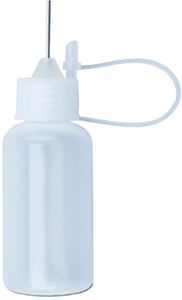
Many different glues are available to crafters, and each person seems to have a favorite when it comes to quilling. The main thing is to use only a scant amount as no glue should show on a finished project.
The most commonly recommended glue is any brand that dries clear. The main thing to remember is to use a very small amount so that no glue shows on your finished piece.
To apply glue to coils, many quillers use a refillable, precision-tip glue bottle. You can also dip the point of a paper piercer, T-pin or toothpick into a puddle of glue, then carefully apply to your quilled shape.
It is helpful to work on a nonstick craft sheet or waxed paper while assembling quilled components with glue.
When gluing assembled quilling to cardstock or mat board, spread a thin layer of craft glue on a nonstick surface. Hold the quilled shape with tweezers, touch the underside to glue and place directly on the backing surface. Avoid sliding the quilling into position as this will leave a shiny trail of glue. 

When making cards, use double-sided adhesive to secure cardstock or paper layers to a card front. A glue stick can also be used and allows for a bit of repositioning, but the layers may not hold as well long-term.
By Shelly Krzyzewski & Ann Martin
Scrolls
C Scroll
Roll each end of strip toward center; the midsection will curve gracefully.

V Scroll
Fold strip in half and roll each end outward.

Modified V Scroll
Fold strip in half. Roll one end away from fold and the other end toward fold.

Y Scroll
Fold the strip of paper in half and roll the ends outward like a V Scroll. Spread glue between the strips at the base and press together.
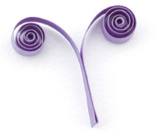
Heart Scroll
Fold strip in half and roll each end inward toward midpoint.

Coils
Tight Coil
Roll strip on tool and adhere end in place without allowing coil to relax. Slide coil off tool.
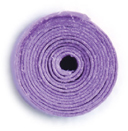
Domed Tight Coil (Grape Roll)
Form a Tight Coil and gently push up from underside of coil with the ball of a glass-head pin or fingers. Apply a thin coat of glue inside dome to hold rounded shape.
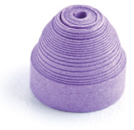
Loose (Closed) Coil
Roll one end of strip and slide coil off tool. Tighten coil or allow it to relax to create coil of desired size; adhere end to outer edge.

Ring Coil
Use a cylindrical object to form a ring of desired size. Wrap strip around the object several times; adhere end and slide coil off object.
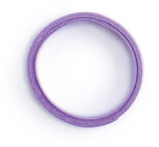
Teardrop
Form a Loose (Closed) Coil. Pinch the joining spot to create a point.
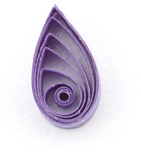
Marquise
Form a Loose (Closed) Coil. Pinch opposite sides to create two points, taking care to keep coil center positioned in center of Marquise.



